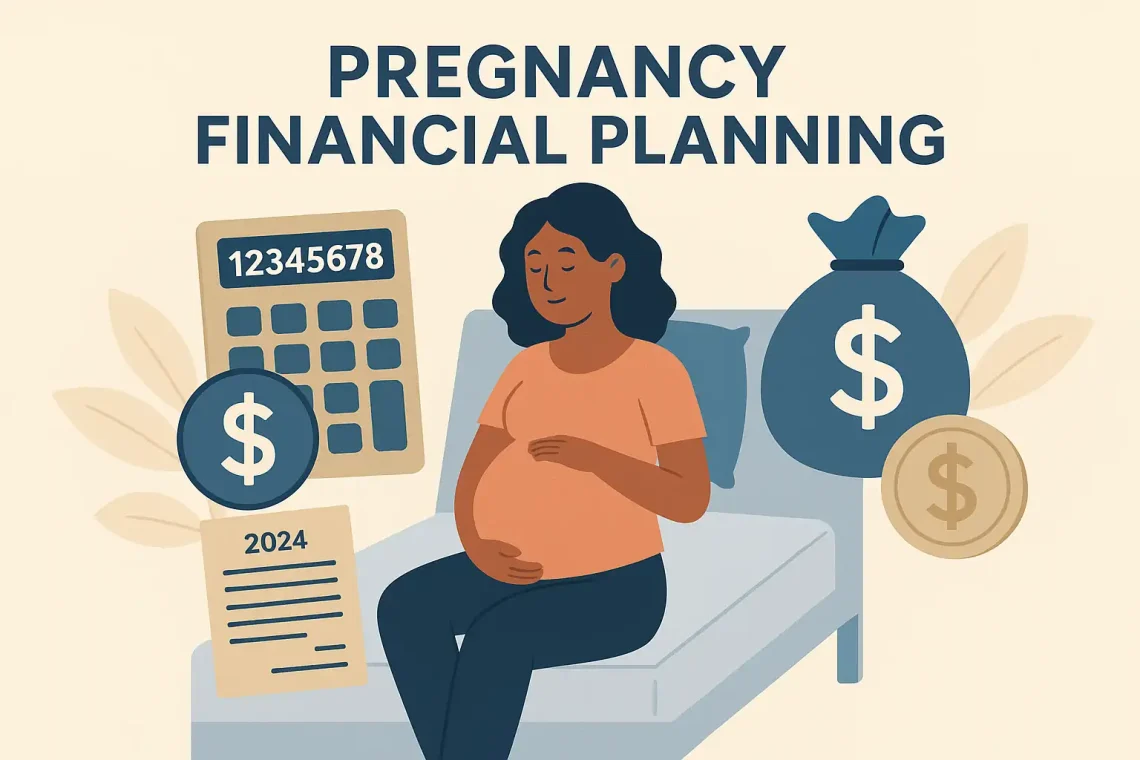
Pregnancy Financial Planning – 7 Smart Steps for New Parents
1. Understand the True Costs of Pregnancy
Start by estimating the full cost of having a baby: doctor visits, ultrasounds, maternity clothes, supplements, and hospital delivery. If you’re in a country where private healthcare dominates, these costs may climb rapidly. It’s also easy to forget hidden expenses like transportation to appointments or time off work. Knowing these figures early helps shape your financial planning for new moms with greater accuracy.
2. Review Your Health Insurance Coverage
If you’re covered by insurance, now is the time to dig into the fine print. Are all prenatal tests included? Will the hospital delivery be partially or fully covered? Does your plan cover emergency C-sections? What about newborn care after birth? Clarity on these questions gives you a financial safety net and peace of mind—both crucial components of smart pregnancy financial planning.
3. Create a Budget During Pregnancy
Use a spreadsheet or app to build a realistic budget during pregnancy that includes recurring and one-time expenses. For example, supplements and prenatal vitamins are monthly costs, while baby furniture is a one-off. This method not only prevents overspending but also allows room for sudden needs like medical exams or seasonal maternity wear. Remember, good budgeting is the backbone of smart planning.
4. Start an Emergency Fund (If You Haven’t Already)
Pregnancy is unpredictable. Bed rest, additional lab work, or early delivery can happen without warning. An emergency fund covering at least 2–3 months of living expenses helps protect your household from financial shocks. Building this fund should be a top priority among the financial tips for expecting parents.
5. Plan for Maternity Leave Finances
In many jobs, maternity leave is unpaid or partially covered. Research your rights, employer policies, and available government benefits. Understanding how long you’ll be away from work and how much income you’ll have ensures you can adjust your spending accordingly. Clear planning here can help you navigate your maternity leave finances without added stress.
6. Save Money for Baby Essentials
Focus on the true necessities: diapers, a safe car seat, crib, and feeding tools. Resist the temptation to buy every “must-have” gadget. Use lists, ask experienced moms, and consider borrowing or purchasing gently-used items. Using a printable baby budget planner can also help manage costs while making sure nothing essential is forgotten.
7. Plan Ahead for the First 3 Months
Don’t stop at budgeting for delivery. Extend your pregnancy financial planning into the first few months postpartum. You may need more groceries, help at home, or backup childcare. Also, account for things like baby health checkups and breastfeeding supplies. By forecasting these expenses now, you’ll be better equipped when life gets busy and sleep becomes a luxury.
Money-Saving Tips for Pregnancy
- Use free budgeting apps to monitor daily expenses
- Talk to experienced parents about overlooked costs
- Shop during sales or accept gently-used items from trusted friends
- Track tax deductions for pregnancy if allowed in your country
How to Prepare Financially for a Baby
Pregnancy is life-changing, but it doesn’t need to be financially overwhelming. With preparation, clarity, and shared goals, you and your partner can build a plan that supports your growing family. Learning how to prepare financially for a baby ensures that both your emotional and financial foundations are ready for parenthood.
For more practical advice beyond pregnancy financial planning, explore our Mom Life Section. You can also visit trusted sources like the March of Dimes pregnancy cost guide to stay informed and empowered.




